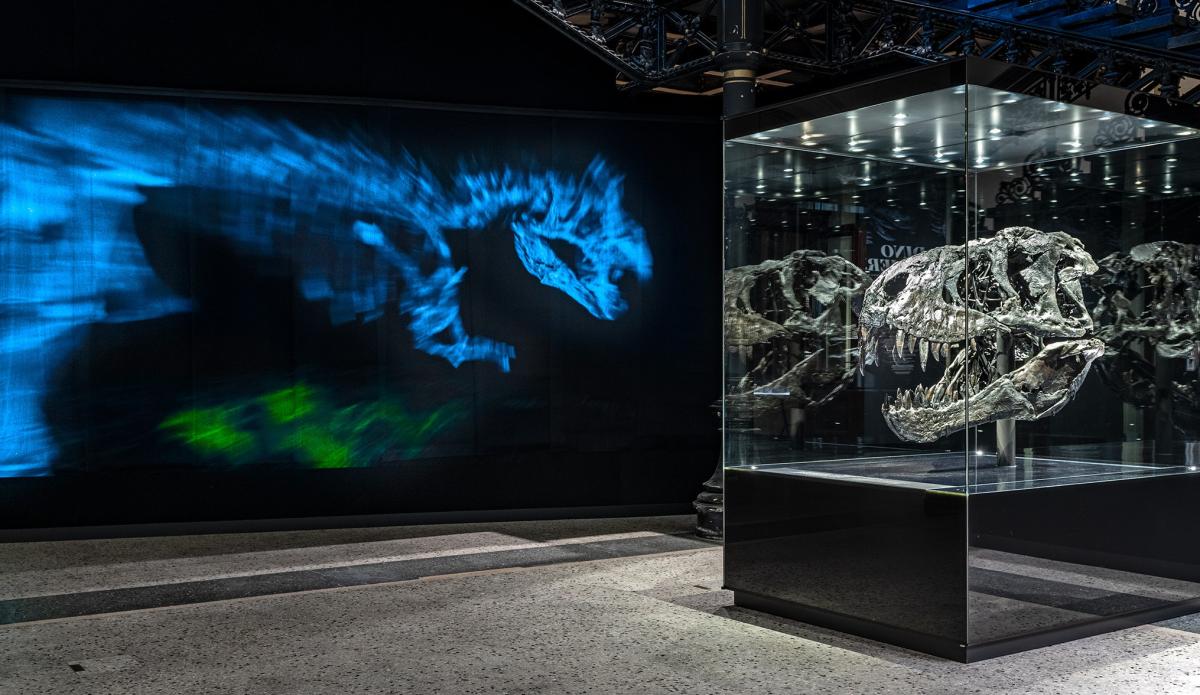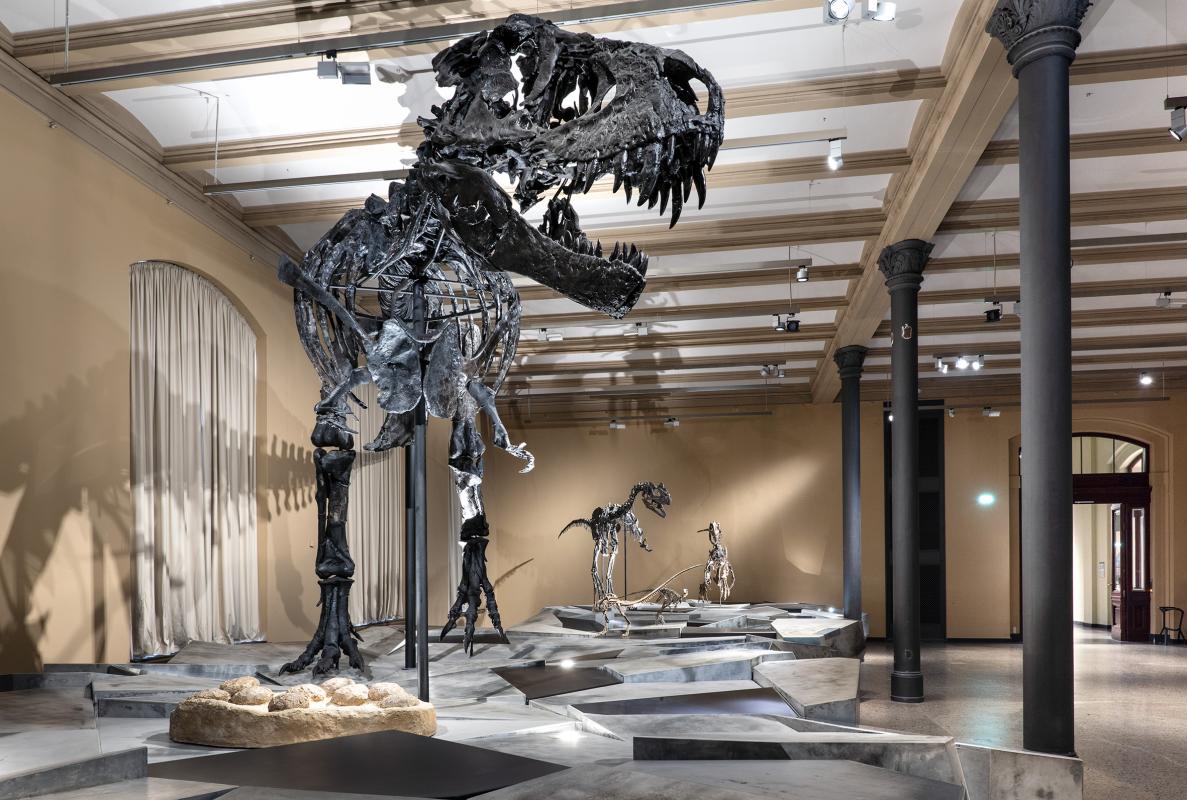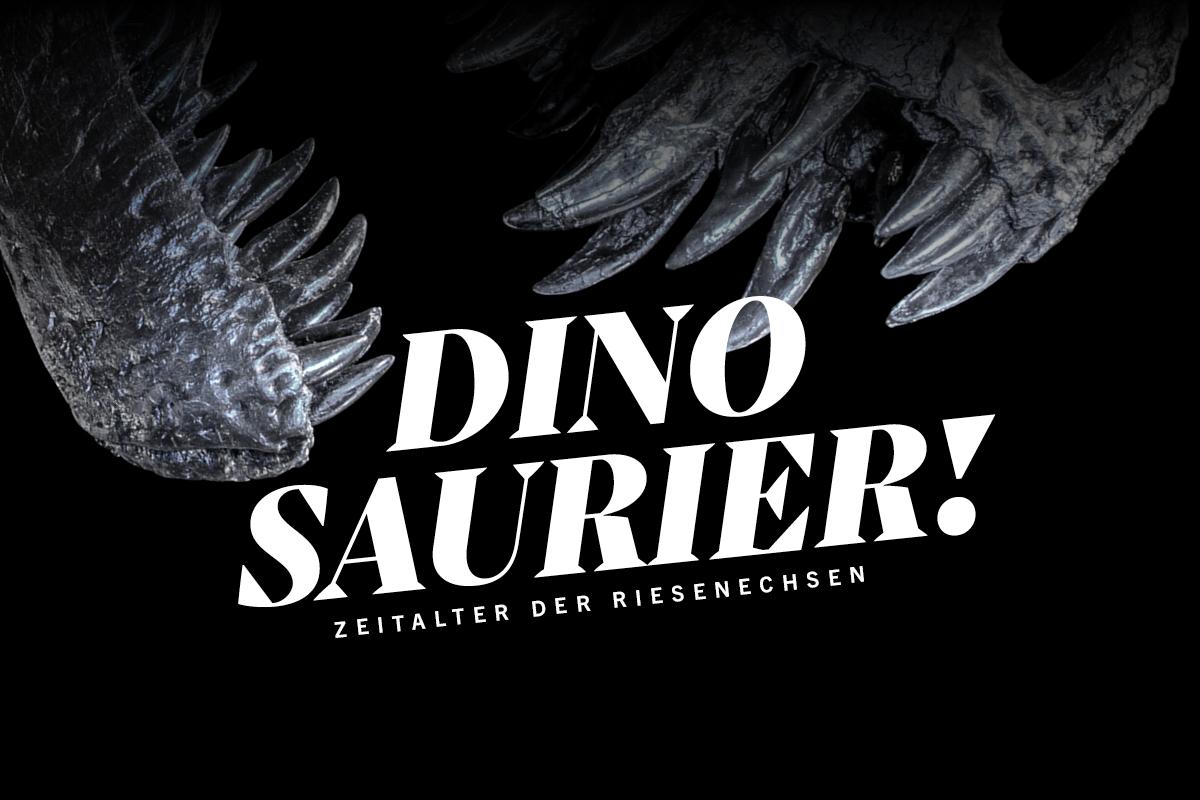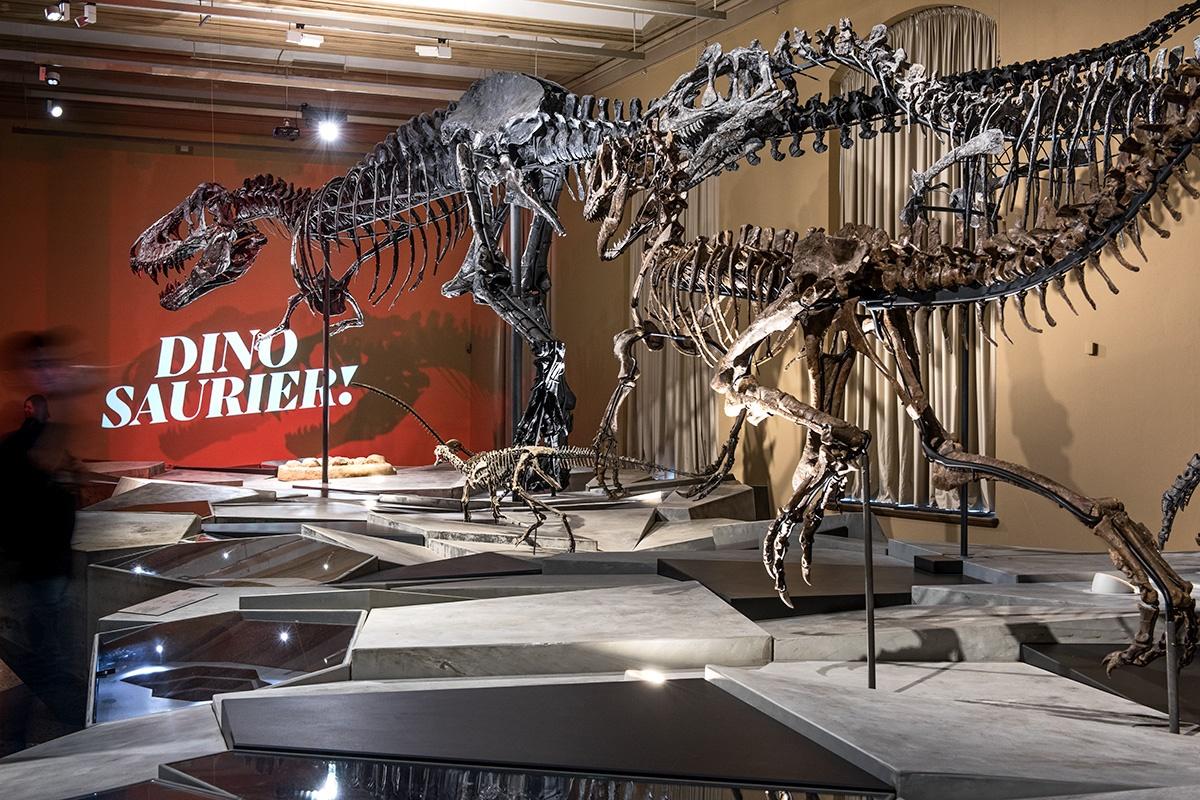Special exhibition until further notice
Discover dinosaurs from the three geological eras Triassic, Jurassic and Cretaceous in our special exhibition "DINOSAURS!".
Dinosaurs were an incredibly successful group of animals. They populated our planet for more than 150 million years, with their reign spanning three geological eras: Triassic, Jurassic and Cretaceous. They survived one of the five great mass extinctions and adapted to changing environmental conditions. The end of their reign came suddenly and occurred 66 million years ago.
What does this story have to do with us? Find out and be amazed by spectacular fossils from three ages of the dinosaur era.
Eye to eye with predatory dinosaurs

The exhibition kicks off with two predatory dinosaur skulls on display. Surrounded by sharp teeth, visitors can view the impressive skulls of T. rex Tristan Otto and Allosaurus up close. This meeting of the leading predators Allosaurus and T. rex would never have happened in real life. Allosaurus roamed the forests in the Jurassic period, while T. rex lived about 80 million years later in the Cretaceous period. Visitors can explore what is known today about the predatory and social behaviour of the carnivores eye to eye with the predatory dinosaurs.
A walk through the history of the earth
Different dinosaur species lived in the three geological eras, which visitors move through in this special exhibition. Beginning with the oldest Earth Age, the Triassic, visitors travel to the Jurassic period and complete their tour in the Cretaceous period 66 million years ago. Along the way, they encounter dinosaurs from all these geological eras. Visitors are welcomed by Plateosaurus, a Triassic herbivore that is not only the oldest dinosaur in the exhibition in terms of geological history, but also one of the earliest dinosaur finds ever discovered, dating back to 1834.
In the following Jurassic Age, the dinosaurs had their heyday. This age is well known through the film "Jurassic Park". The skeleton of the small Nanosaurus also comes from this time. In contrast to its predatory contemporaries the Allosaurs, the Nanosaurus fed on plants.
At the end of their journey through prehistoric times, visitors can meet our Tyrannosaurus rex Tristan Otto. He was among the last living dinosaurs and lived in the Cretaceous.
Star of the exhibition: Tristan Otto

In December 2015 Tristan Otto came to Europe and to the Museum für Naturkunde in Berlin as the first original T. rex skeleton. Tristan Otto is thus one of the few original T. rex skeletons outside North America.
The twelve meters long and four meters high skeleton of the predatory dinosaur from the Upper Cretaceous period is 66 million years old. Its night-black colour is characteristic of fossils from the so-called Hell Creek Formation, a fossil-rich rock layer in the US state of Montana, where the T. rex was found in 2010. Like Tristan Otto, all previous T. rex finds originate from North America. The recovery and preservation of the bones took a total of four years. Tristan Otto is one of the best-preserved Tyrannosaurus rex specimens worldwide, with an almost completely preserved skull. He is named after the sons of the two owners.
Most of the pieces in the special exhibition "DINOSAURS!" are loans from private owners. You can find out more about the topic of privately owned fossils here.

